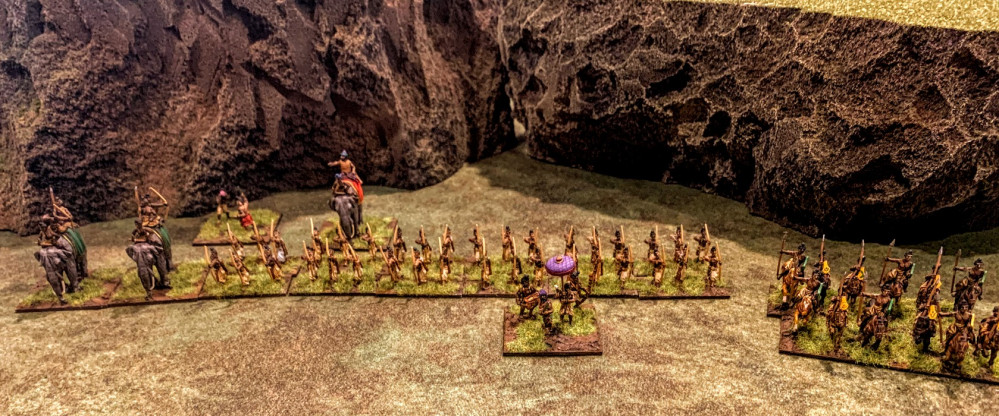
Classical Indians for MEG
Field Guide to 15mm Elephants
I decided to try elephants from three different suppliers, Essex, Magister Militum, and Xyston. I will provide a comparison here and share how I painted them.
Pachyderm Assembly Techniques of North America
Elephants from all three manufacturers come in three pieces aside from the riders. The elephants are composed of a right and left half and a head.
Metal casting being what it is, there are some significant gaps the need to be filled. I would say all three manufactures were equal in this regard.
My approach is to sandwich the two halves with some green stuff and CA glue. Now I know this is not the best possible bond, but these guys were never going to survive a fall from any significant height. I am confident they will stick together as long as they are not abused.
Elephants may not be the color you think they are, but my elephants are the color you think they are.
I did a little experimentation and google research on the color of Elephant skin. From what I can tell, elephants attract dust, and whatever color they may be underneath, they tend to take on the color of the dirt they are operating in. Do a search on Indian Elephant and you will see browns and beiges.
Maybe Mauryan Empire elephant drivers washed their elephants every day, maybe they didn’t. I don’t know. I went with grey myself which I realize is probably a more stylized and cartoony version of Indian war elephants and not a realistic recreation. I am fine with that.
I will make a detailed account and apologies for my color decisions and mistakes in later updates.
My grey elephant skin process is as follows:
- Prime with Wraithbone spray primer.
- Apply Basilicanum Grey Contrast
- Dry brush Army Painter Filthy Cape
- Wash with Agrax Earthshade
- Dry brush again with Filthy Cape
Optionally, sponge on some flesh-colored paint to trunks and ears.
Comparison of three Manufacturers
Essex
Some of those Essex molds are as old as I am, but, they are almost always acceptable. I found them to be a no-frills basic elephant. There were not a lot of extra details, basically just a blanket. Someone with freehand skills could probably decorate that blanket with elaborate and beautiful patterns. I am not one of those people. I painted a little border in metallic gold but that was about all I could come up with to enhance them. They come with three crew who are typical 15mm size. They all seem to be identical. Same pose, etc.
Magister Militum
These have a few more bells and whistles. You get a blanket on top of a blanket for up to four elephant passengers. I could only fit three riders comfortably, but that allowed me to add some variation. I also like the variety and more dynamic poses of the elephant heads. Their scale is similar enough to Essex in my opinion.
Xyston
Xyston is known for heroically proportioned 15mm figures, by which I mean they are really 18mm, or sometimes nearly 20mm. Their classical Indian elephants were no exception. They look a little enormous standing next to their smaller herd mates from other manufacturers, but other than that. The riders are a little more detailed than Essex or MM, but hey when you’re 25% bigger, there is room for more detail. I do like them, but for the most aesthetic deployment, I might put them on the other side of the line from the others.











































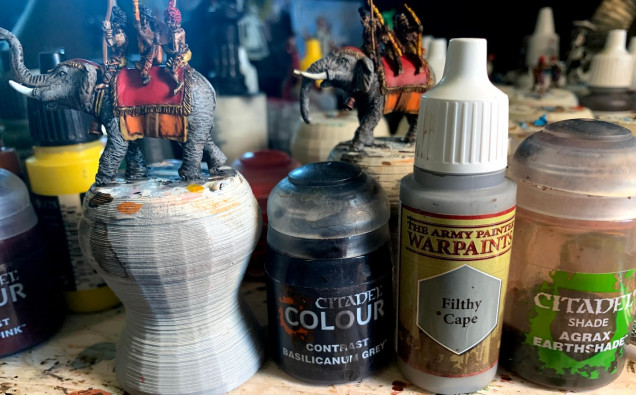
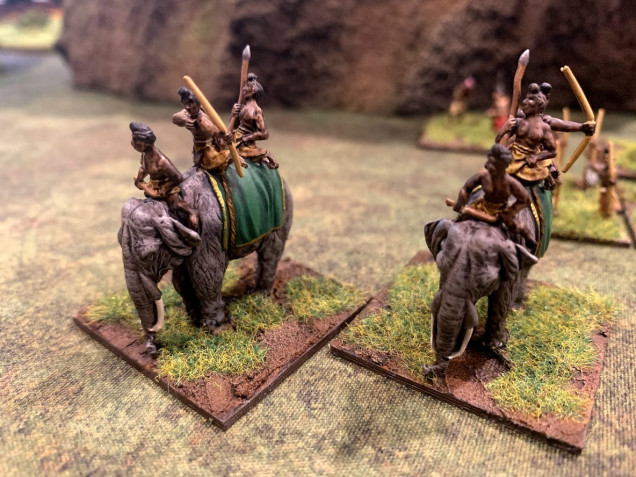
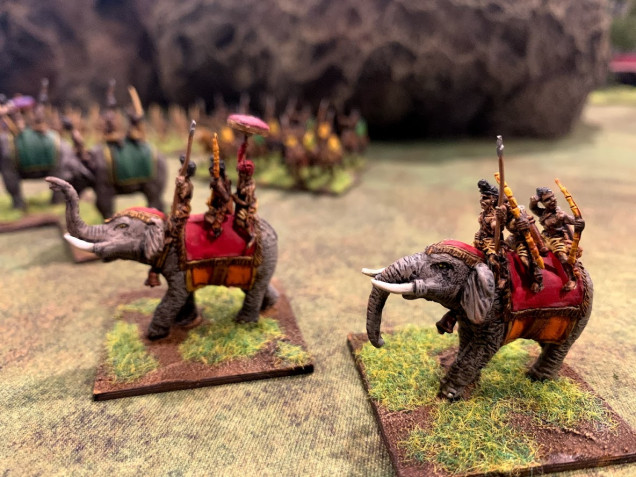

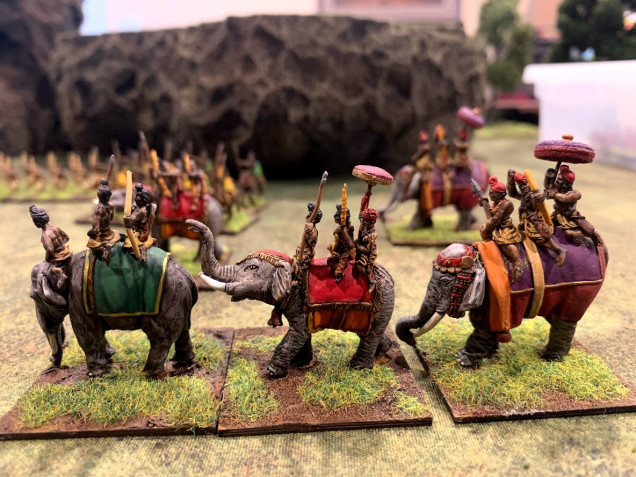
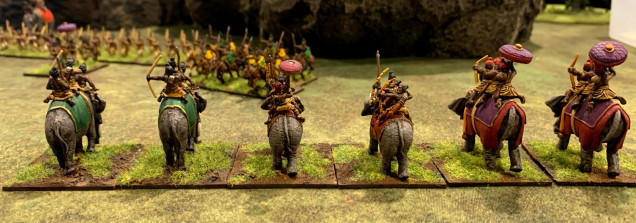

































I quite like seeing the different sized elephants all together, as it gives an impression of that they’ve come from a big herd with a range of animal sizes.